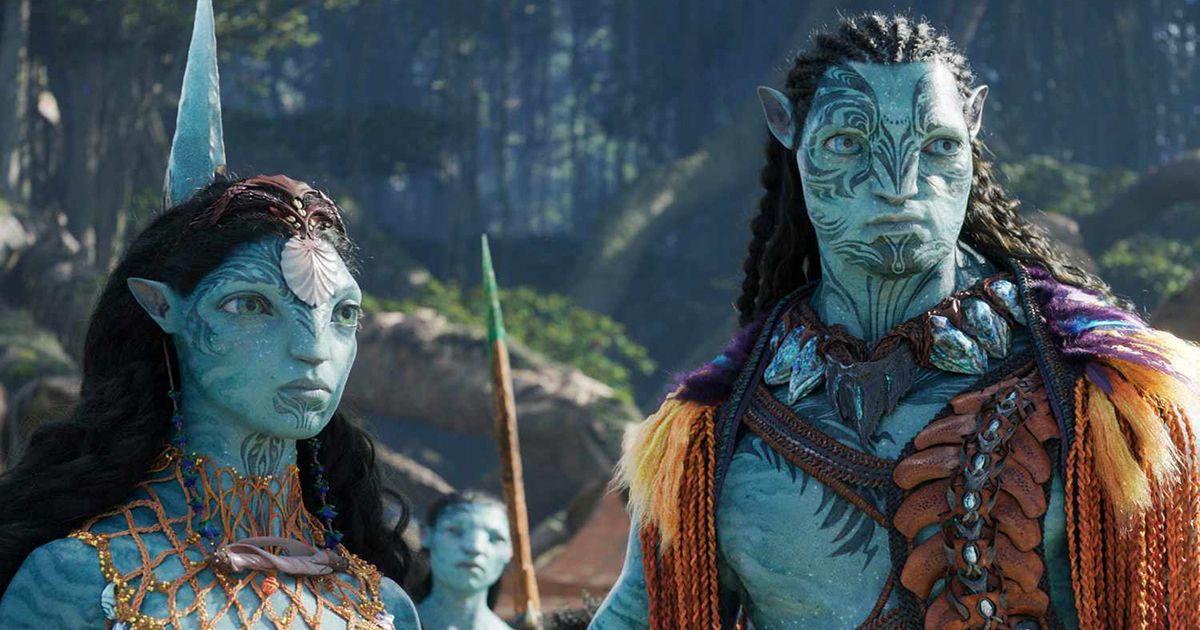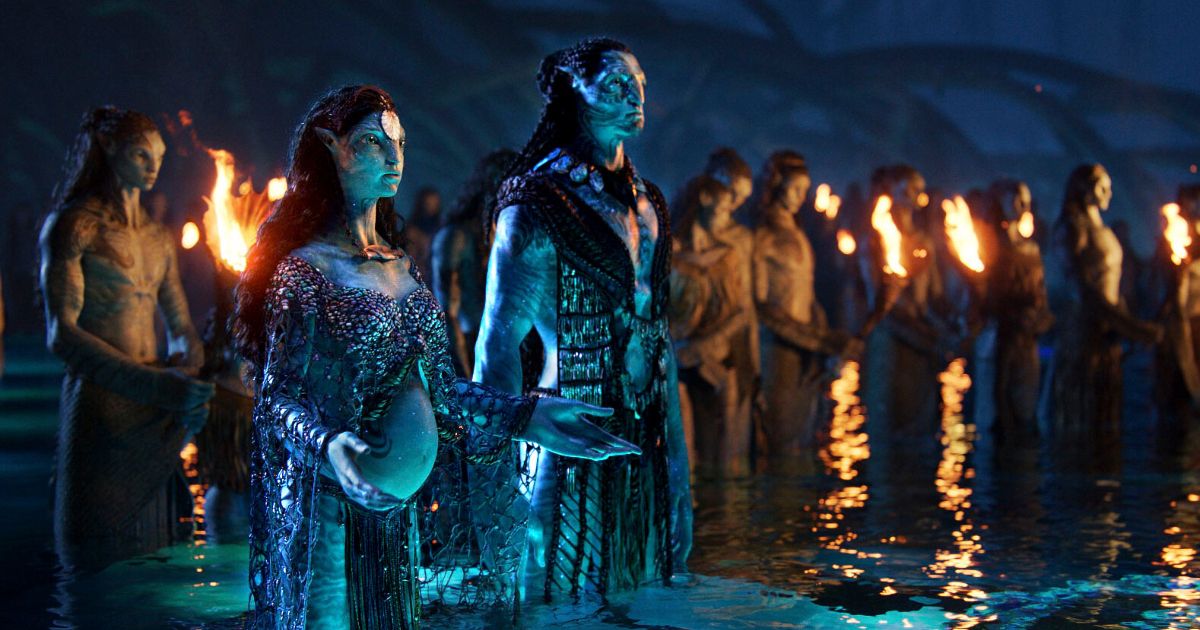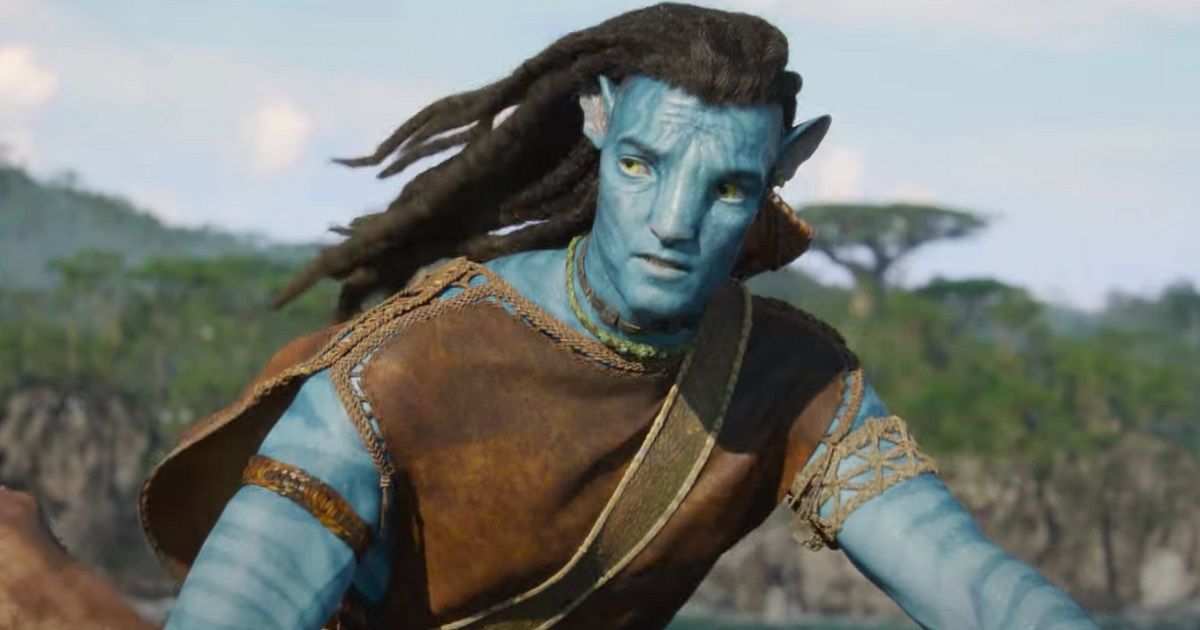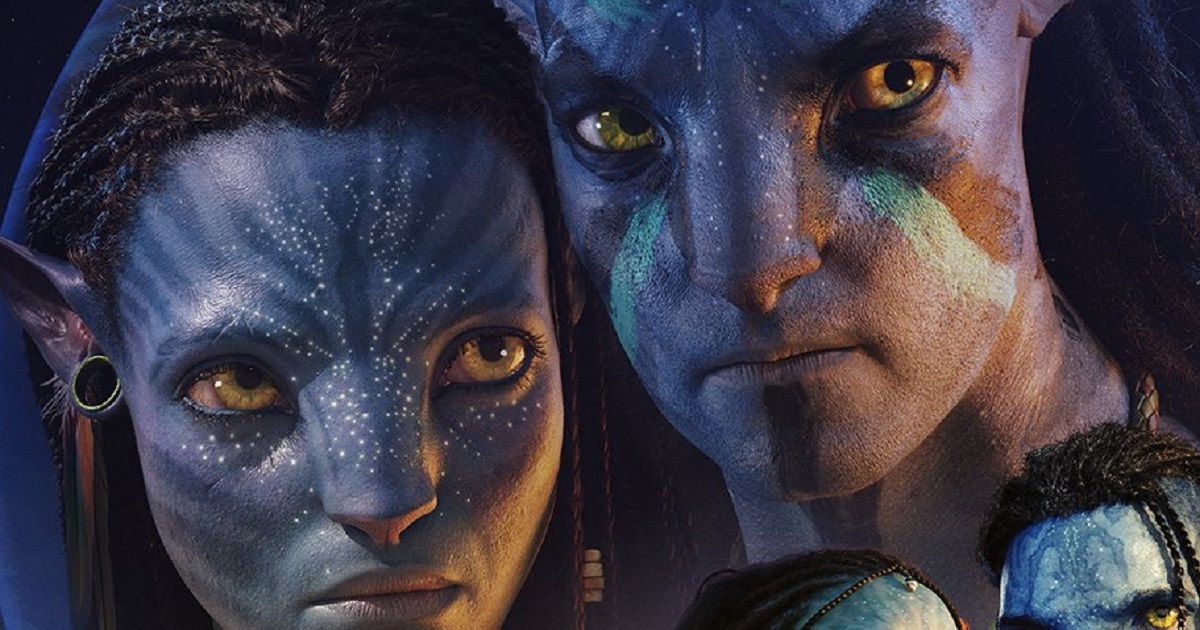In 2009, James Cameron once again made film history with his ground-breaking release of Avatar. With a budget of $237 million, the film opened to a box office mind-boggling figure of $2.923 billion. The film set a precedent in the intricacy of its production, with Cameron once again establishing his mastery over his craft. Having achieved worldwide acclaim with the international success of 1997’s Titanic, which effectively launched the careers of its stars to new heights, Cameron has long been allowed great artistic freedom on account of his record for consistent results. Despite the enormous hit that the first Avatar film proved to be, it would be over a decade before James Cameron released its sequel, Avatar: The Way of Water, now in theaters. The film opened to a historic $441 million at the box office, solidifying the Avatar franchise as a project that will continue to expand, as per Cameron’s vision.
Not all audiences, however, are so thrilled with the premise of the movie. Native American activists have taken to Twitter to condemn the film, citing a James Cameron interview in which he claims the Na’vi people are based on American Indigenous cultures, specifically the Lakota.
Avatar Franchise History and Premise
The first installment of Avatar takes place in the year 2154, a year in which we find Earth’s natural resources utterly depleted. In search of new resources, scientists begin to explore the world of Pandora, a planet inhabited by blue-skinned, large humanoids known as the Na’vi. These scientists craft human and Na’vi hybrid bodies called Avatars, vessels through which their agents can remotely operate through a sort of transference of consciousness. The plan goes awry when Jake Sully, a former marine and now paraplegic agent for the RDA, falls in love with a Na’vi woman, Neytiri, and ultimately chooses life with her in Pandora over the greedy enterprise of his own species and home planet.
Over a decade after the sensation of Avatar, James Cameron has now released his long-awaited sequel, Avatar: The Way of Water. Expectations were high on account of the budget for the sequels, as well as James Cameron’s own admission that he had over one 1,000 pages of notes dedicated to them. The second film in the franchise continues the struggle of the Na’vi against the human invaders, with Jake Sully now living fully in his avatar and having started a family with his love, Neytiri. The epic three hour film is an ambitious endeavor, justifying the length of time needed to have crafted it.
Despite early reports that the movie was underperforming at the box office, its opening weekend came to a close with a whopping $441 million in sales. While this is a wildly favorable figure for any film, Avatar: The Way of Water may have still fallen just slightly short of breaking even, with its estimated budget ranging between $350-460 million dollars. The movie is certainly going down in film history as one of the most expensive films ever made. The film furthermore falls short thus far from reaching the insane profit margins of its first installment, but the profits are likely to rise as critical acclaim for the film grows following its opening weekend.
James Cameron is Quoted on His Lakota Inspiration for the Na’vi
Avatar is widely regarded as a groundbreaking film, with its special effects even requiring the invention of new cinematic technology. While praise for the franchise is high, some are fervent detractors in account of what they regard as racist themes and inspiration behind its theme. Some critics noticed the parallels between the struggle of the Na’vi in the film by American invaders and the real life history of Indigenous Americans facing genocide and oppression at the hands of the European colonizers.
Despite the film promoting the idea that the invasion is unethical, unwarranted, and flat-out wrong, some see the portrayal of the Na’vi people as belittling to Native Americans. The film is regarded by such activists as a portrayal of a “white savior” that errantly believes he is needed by minorities in order to protect and preserve themselves. These critics further find it offensive that the film portrays the Na’vi as eager recipients of this “white saviorism”. James Cameron has admitted that the Na’vi are based on Native Americans:
“Avatar very pointedly made reference to the colonial period in the Americas, with all its conflict and bloodshed between the military aggressors from Europe and the indigenous peoples. Europe equals Earth. The Native Americans are the Na'vi. It's not meant to be subtle.”
He is also quoted in the following explanation:
“I felt like I was 130 years back in time watching what the Lakota Sioux might have been saying at a point when they were being pushed, and they were being killed, and they were being asked to displace, and they were being given some form of compensation. This was a driving force for me in the writing of Avatar – I couldn’t help but think that if they [the Lakota Sioux] had had a time-window, and they could see the future… and they could see their kids committing suicide at the highest suicide rates in the nation… because they were hopeless, and they were a dead-end society – which is what is happening now – they would have fought a lot harder.”
Twitter Discourse and Criticism
As one may expect, these quotes made by Cameron have sparked controversy, chiefly his naming of the Lakota Sioux reservations as a “dead end society”. While Cameron likely felt his statements were made in earnest support of Native American individuals, Indigenous people feel slighted by the implication that their ancestors did not fight as hard as they could or should have.
Many on Twitter have been calling for the outright boycott of the film, the discourse of which seems to grow as the movie’s box office numbers climb. Activists not only claim that the ideas promoted by James Cameron are dangerous revisionist history, but that his depiction of the Na’vi people is racist cultural appropriation, with some users dubbing the representation as “blueface”.
Supporters of the film hold that the story is an homage to Native people, rather than a criticism or dehumanized characterization. The film ultimately promotes the Na’vi cause, very clearly making the human invaders the blatant villains of the franchise. Contrastingly, Cameron holds the film to be distinctly progressive, touting it as an even greater representation of female empowerment than Captain Marvel or Wonder Woman.
Regardless of the online discussion, Avatar: The Way of Water continues to garner acclaim and fill theater seats, and the franchise has a certain future in store. In fact, James Cameron has already filmed the third Avatar sequel, with the production taking place concurrently to the making of the second film. This is part of a four film guarantee as per Cameron’s contract following the historic premier of Avatar. As voices of condemnation against the film grow, only the future may tell how the franchise will continue to grow through the scrutiny, or if the scrutiny will ever really come to center stage as a conversation that closely follows the film.




